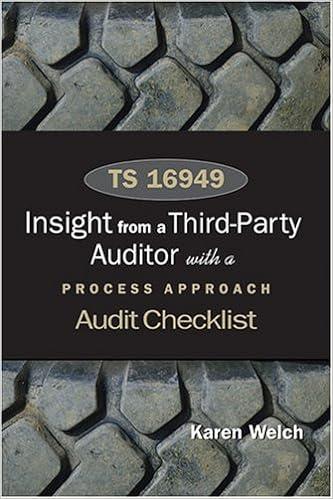Question
20. On January 1, 2019, the stockholders equity section of Nance Corporation shows: Common stock ($5 par value) $1,500,000; Paid-in capital in excess of par
20. On January 1, 2019, the stockholders equity section of Nance Corporation shows: Common stock ($5 par value) $1,500,000; Paid-in capital in excess of par value - common stock $1,000,000; and retained earnings $1,200,000. During the year, the following treasury stock transactions occurred.
Mar. 1 Purchased 30,000 shares for cash at $22 per share.
July 1 Sold 6,000 treasury shares for cash at $27 per share.
Sept. 1 Sold 5,000 treasury shares for cash at $19 per share.
Nov. 1 Sold 4,000 treasury shares for cash at $12 per share.
Journalize the treasury stock transactions during the year.
March 1:
July 1:
September 1:
November 1:
21. On October 1, Benjis Bicycle Store had an inventory of 20 bicycles at a cost of $200 each. During the month of October, the following transactions occurred.
Oct. 4 Purchased 40 bicycles on account at a cost of $200 each from Monroe Bicycle Company, terms 1/10, n/30.
6 Sold 25 bicycles to Team Wisconsin on account for $330 each, terms 2/10, n/30. The bicycles cost $200 each.
7 Received $400 credit from Monroe Bicycle Company for the return of 2 defective bicycles.
13 Granted $330 credit to Team Wisconsin for the return of a defective bicycle costing $200.
14 Paid Monroe Bicycle Company in full, less discount.
Prepare the journal entries to record the transactions listed above for Benjis Bicycle Store assuming it uses a perpetual inventory system.
22. The December 31, 2018 balance sheet of Barone Company had Accounts Receivable of $400,000 and a credit balance in Allowance for Doubtful Accounts of $32,000. During 2019, the following transactions occurred: sales on account, $1,500,000; sales returns and allowances, $50,000; collections from customers, $1,250,000; accounts written off, $36,000; previously written off accounts of $6,000 were collected.
(a) Journalize the 2019 transactions listed above.
(b) Prepare the journal entry to record bad debt expense for 2019 assuming that the company estimates that 8% of the ending balance in accounts receivable at December 31, 2019, will become uncollectible.
Step by Step Solution
There are 3 Steps involved in it
Step: 1

Get Instant Access to Expert-Tailored Solutions
See step-by-step solutions with expert insights and AI powered tools for academic success
Step: 2

Step: 3

Ace Your Homework with AI
Get the answers you need in no time with our AI-driven, step-by-step assistance
Get Started


